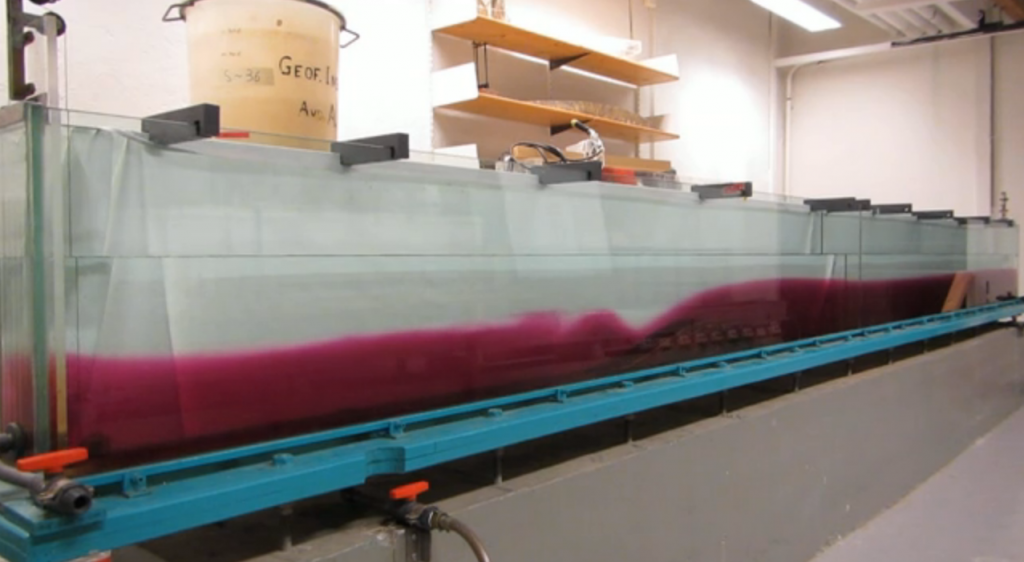
Internal (lee) waves in a tank.
Lee wave experiment in a large tank with a moving mountain.
In this previous post, we talked about internal waves in a very simple experiment. But Geophysical Institute has a great tank to do lee wave experiments with that I want to present here (although it doesn’t seem to be clear what will happen to the tank when the remodeling of the main building starts in November – I hope we’ll be able to save the tank!). I think it has originally been used for real research, but these days the GEOF130 lab is the only time this tank gets used.

Tank for internal lee wave experiments – a “mountain” is moved through the tank and generates internal waves.
In this tank, a “mountain” can be moved all the length of the tank through more or less stagnant water, thereby simulating a current going over a non-moving mountain (which might be a slightly more realistic setup). At the lee of the mountain, lee waves form on the interface between two water layers of different density.
For more information on internal waves, check out these posts [which are scheduled to go online over the next couple of days]:
Internal waves in the atmosphere | Adventures in Oceanography and Teaching says:
[…] Internal waves exist on the interface between fluids of different densities. In the ocean they are mostly observed through their surface imprint. In the tank, we could also observe them by looking in from the side, but this is hardly feasible in the ocean. But luckily vision is easier in the atmosphere than in the ocean. […]